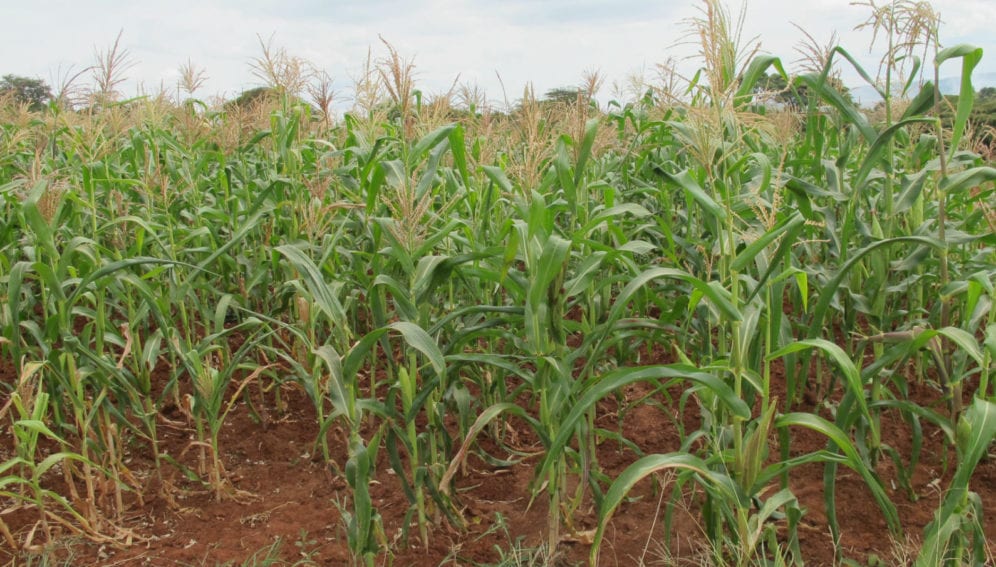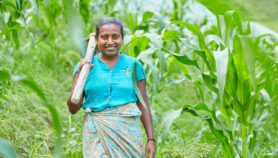By: Aisling Irwin
Send to a friend
The details you provide on this page will not be used to send unsolicited email, and will not be sold to a 3rd party. See privacy policy.
[LAUSANNE] Picture-based crop insurance could make its debut in Kenya next year after a study in India found that it may avoid the pitfalls of other insurance schemes.
As trained smallholders photograph their crops during the growing season and dispatch the pictures for expert analysis, the approach could cut costs by reducing the number of field visits by loss assessors.
Insurance could insulate farmers in low- and middle-income countries against regular crop catastrophes and give them the security to invest and experiment. But the costs of processing large numbers of tiny farms, and the high frequency of crop failure have thwarted the success of traditional insurance, said Francisco Ceballos, an associate research fellow at the International Food Policy Research Institute (IFPRI), Washington DC, United States.
“I like it … but it would be based on the level of trust that the farmers and the insurers would establish.”
William Nedgwe
Over the last 20 years, a cheaper version known as index-based insurance, which pays out en masse when triggered by adverse weather, for instance, has often been unpopular amongst farmers, he added. This is because smallholders may get no payout if their crops fail for other reasons such as pests and because the weather may be measured at stations at some distance from the farm and not provide an accurate picture of what an individual farm experienced.
Ceballos told the Tech4Dev conference held in Switzerland last month (27-29 June) of an IFRPI-led randomised study in Haryana and Punjab, India, about the potential of photo-based crop insurance.
According to the study, which is yet to be published in a journal, researchers encouraged wheat farmers to use a smartphone app to photograph their crops throughout the growing season. The photos were sent to agricultural experts who calculated the crop productivity with the help of an image recognition tool that calculated a greenness index for each photo.
Their assessments were then compared with the farmers’ actual productivity, measured by cutting samples of their crops in the field.
The farmers successfully took the photos in the manner prescribed, the researchers found. When the farmers’ crops were physically assessed, it was found that the picture reviewers had correctly distinguished between three categories of farmers – those who had lost less than 20 per cent of their crop, lost 20 to 50 per cent, and lost 50 to 100 per cent, which meant that the correct insurance payouts could be given.
The farmers were also insured under a weather-based index insurance scheme, which paid out to any smallholder who lived in an area where the local weather station had recorded higher-than-normal night temperatures and unusually abundant rain at the end of the wheat season.
The farmers were also insured, for comparison, under a weather-based index insurance scheme, which paid out to any smallholder who lived in an area where the local weather station had recorded higher-than-normal night temperatures and unusually abundant rain at the end of the wheat season. But this scheme failed to distinguish between different levels of crop failure.The trial would bundle insurance with access to stress-tolerant seeds and advice texted back to the farmers based on their photos.
“The exciting thing is that having this smartphone app in the hands of the farmer opens up the possibility to couple the insurance with a number of other things including advisories, pest detection and monitoring at scale in almost real time, and providing weather forecasts that can help them adapt to climate change,” said Ceballos. “We are trying to provide one app instead of the farmer having to deal with many different apps coming from different sources.”
William Nedgwe, Kitui County director at the Kenya Meteorological Department, says: “I like it … but it would be based on the level of trust that the farmers and the insurers would establish.
“We have seen it with climate index-based insurance where, when you get someone to make the measures of the rainfall, they would manipulate it to favour themselves.“So you would have first of all to establish whether the pictures can be manipulated in any way.”
Steve Wiggins, an agricultural agronomist at the UK-based Overseas Development Institute, tells SciDev.Net, “It’s a lovely bit of technology. It’s ingenious … but you can’t run an insurance scheme where for every last half acre that’s insured you have to have an expert panel sitting down to decide on it.”
This piece was produced by SciDev.Net’s Sub-Saharan Africa English desk.














